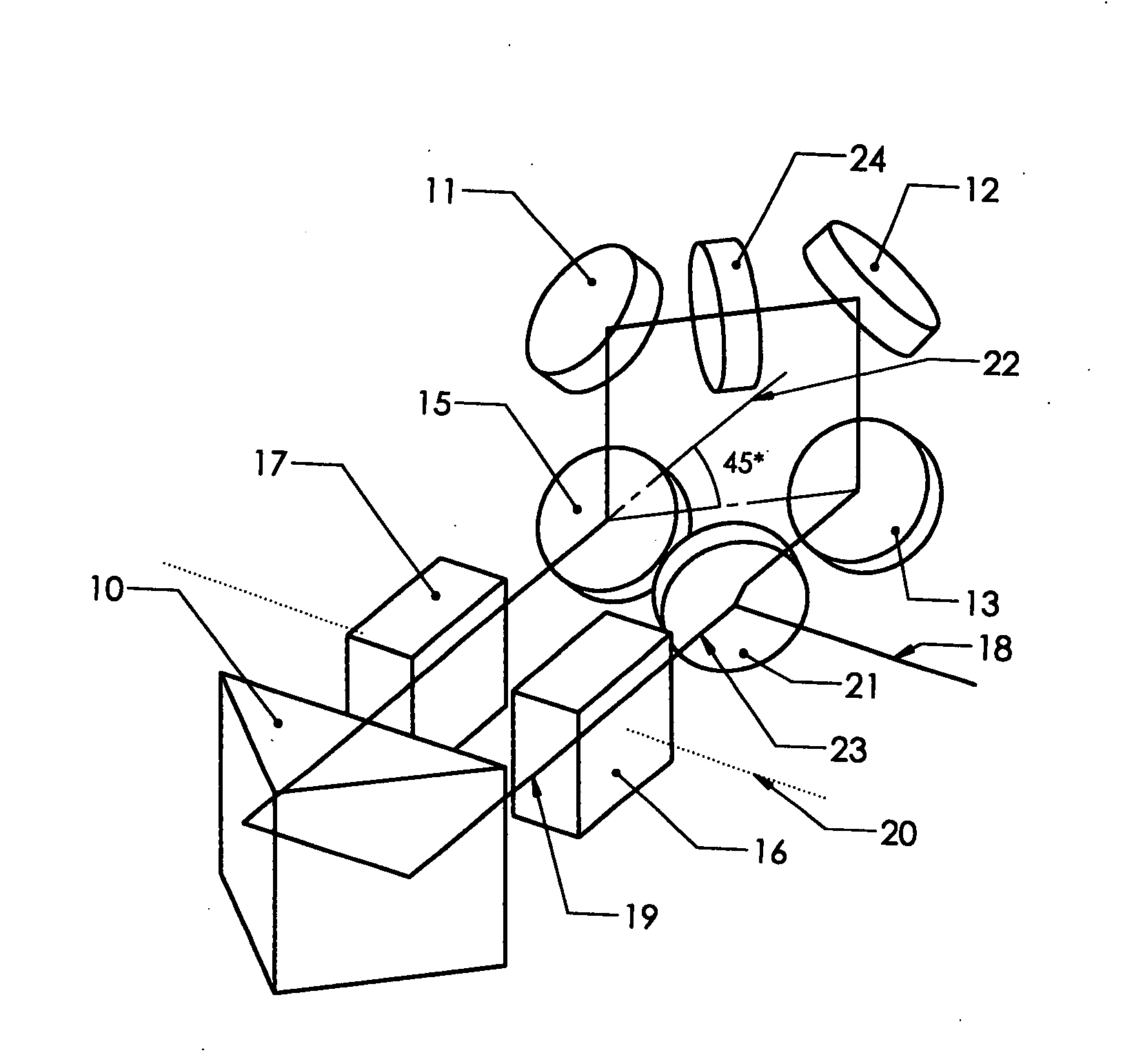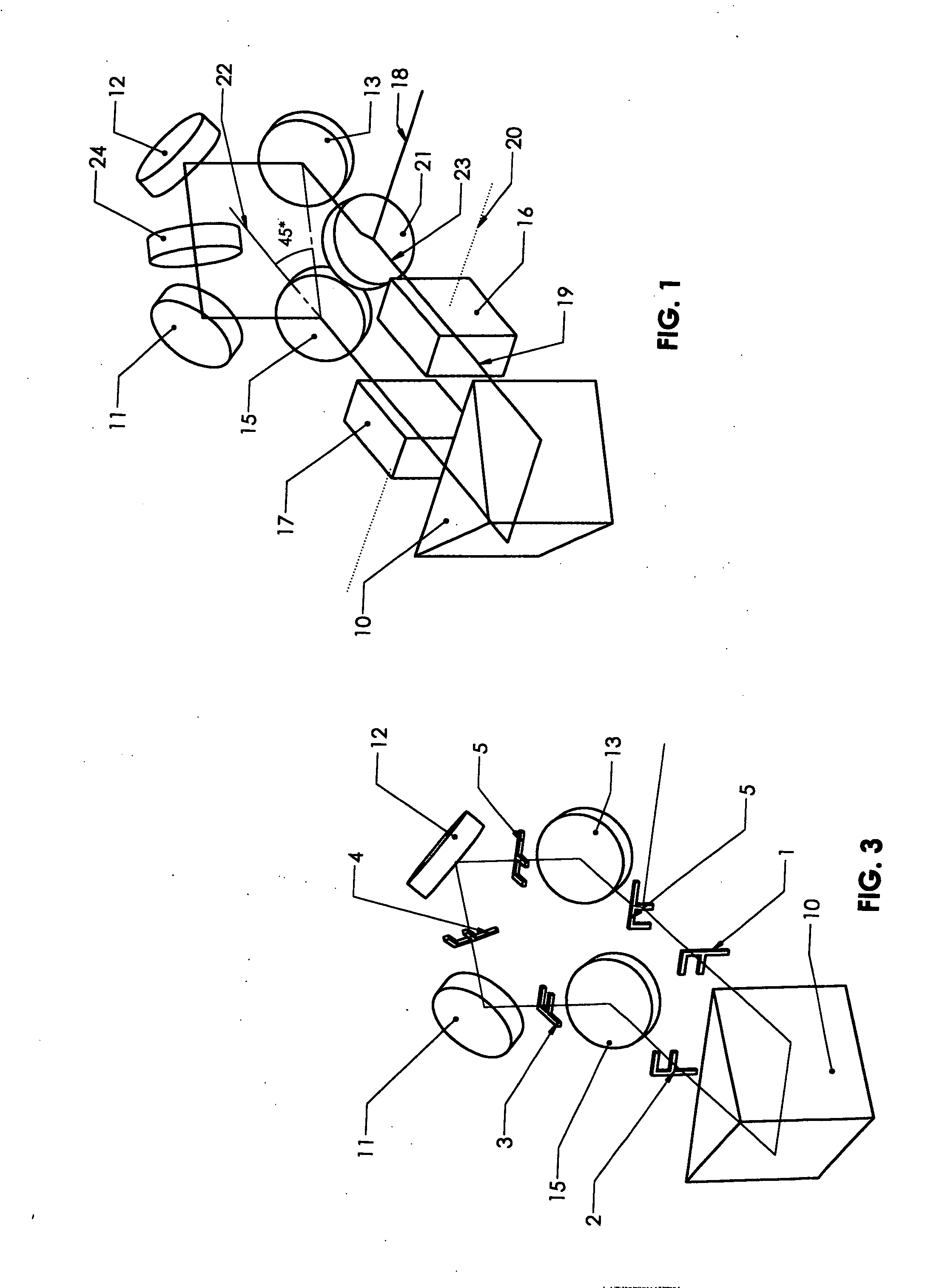Non-planer, image rotating optical parametric oscillator
a parametric oscillator and non-planer technology, applied in non-linear optics, instruments, optics, etc., can solve the problems of low conversion efficiency, small fraction of pump beams converted, inefficient generation of parametric beams in a single path through the crystal(s) and other problems, to achieve the effect of wide wavelength tunability, simple low-cost, reliable and convenient operation
- Summary
- Abstract
- Description
- Claims
- Application Information
AI Technical Summary
Benefits of technology
Problems solved by technology
Method used
Image
Examples
Embodiment Construction
[0023]The following is a description of an OPO having a resonance cavity in which only the signal beam is resonating: (The same resonator can be designed to oscillate the idler beam by selecting a different output coupler and exchanging the term signal with the term or with some modifications both the signal and idler beams could be oscillated.) The oscillator presented in FIG. 1 is formed by six reflective surfaces. A roof prism 10, which provides two reflective surfaces, three mirrors 11, 12 and 13 that are designed to reflect the signal beam, and mirror 15 with a dielectric coating designed to partially transmit the signal beam while maximizing the transmission of the idler beam and the pump beam. Together the four mirrors 15, 11, 12 and 13 are arranged to rotate the cross sectional image of the rotated beam or beams by 90 degrees on each pass through the crystal unit. The pump beam 18 is introduced into the cavity by a mirror 21 that is designed to reflect the pump beam and tran...
PUM
| Property | Measurement | Unit |
|---|---|---|
| angle of incidence | aaaaa | aaaaa |
| fundamental wavelength | aaaaa | aaaaa |
| fundamental wavelength | aaaaa | aaaaa |
Abstract
Description
Claims
Application Information
 Login to View More
Login to View More - R&D
- Intellectual Property
- Life Sciences
- Materials
- Tech Scout
- Unparalleled Data Quality
- Higher Quality Content
- 60% Fewer Hallucinations
Browse by: Latest US Patents, China's latest patents, Technical Efficacy Thesaurus, Application Domain, Technology Topic, Popular Technical Reports.
© 2025 PatSnap. All rights reserved.Legal|Privacy policy|Modern Slavery Act Transparency Statement|Sitemap|About US| Contact US: help@patsnap.com



